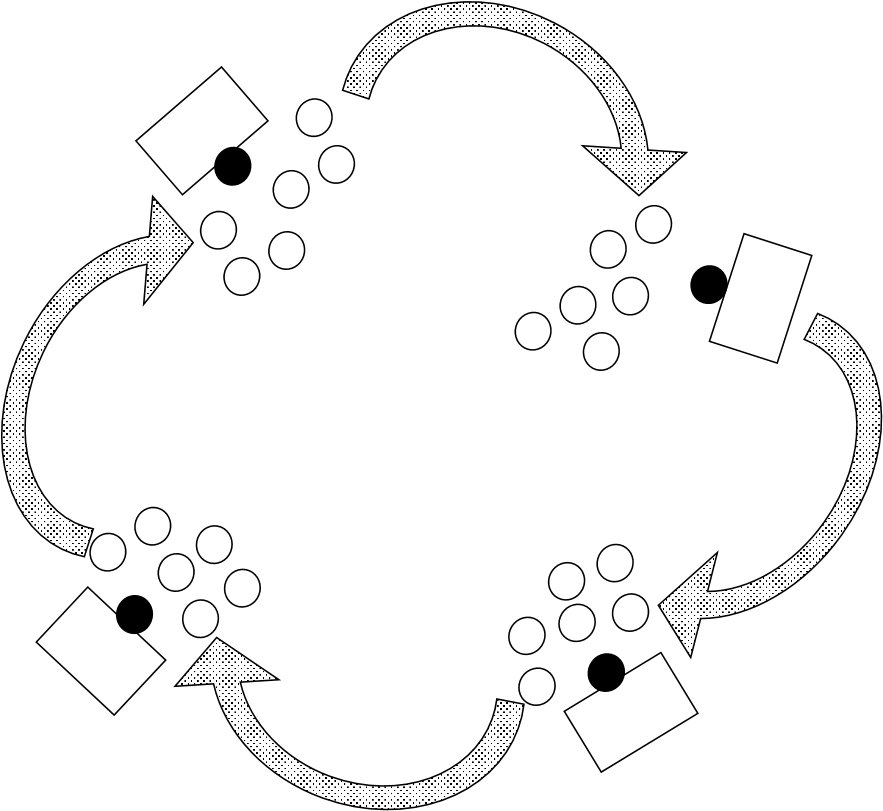Merry-go-round by Coconinoco on flickr.
Carousel is a great technique when you would like a group's discussions to benefit from the time-efficiency and increased air-time of small group 'parallel processing' while also having the opportunity to build on each others' ideas. It has a few more moving parts than some techniques, so here's some detailed guidance.
Station to Station
In carousel, there are a small number of 'stations', usually three to five, and the large group is divided into the same number of small groups.
Each station has a different topic or question.
Each group has a different colour marker pen for recording their conversation, which they carry with them from station to station.
The overall time is divided into as many stations as there are, plus one.
Each station has enough paper and wall space that the groups which visit it can read the previous groups' record and add their own thoughts.
A group begins in a 'home' station and has first crack at the topic or question there. After a short time (10 minutes is often enough) the groups all move on one station, taking their coloured pen with them. They respond to what the previous group has written, and then work on their own question. After all the groups have visited all the stations they arrive back at their home station. The final time slot is spent making a summary of the key insights at each station.
Things to bear in mind:
It's more complicated to explain than it is to do.
Keeping the discipline of the coloured pens really helps: responses can be traced, agreement and disagreement are clearer, and if a group doesn't understand a comment they can find the group using that colour pen and ask for clarifications.
You can tailor the technique to your group and process.
There's a handout and a blog post describing its use in practice.
Making the Path by Walking
This was first published in January 2020’s Making the Path by Walking newsletter. Scroll down to the bottom of the page to subscribe.


